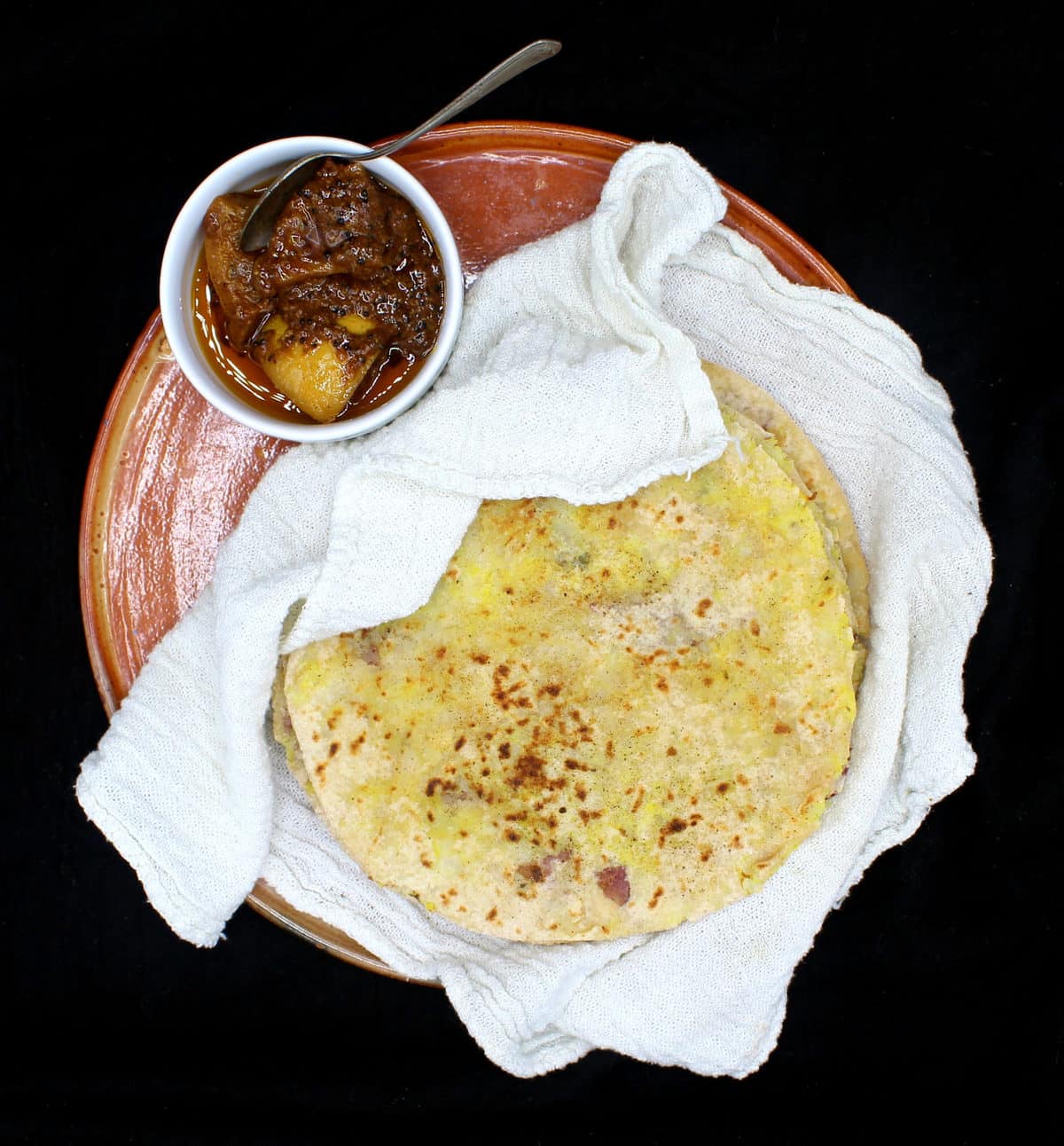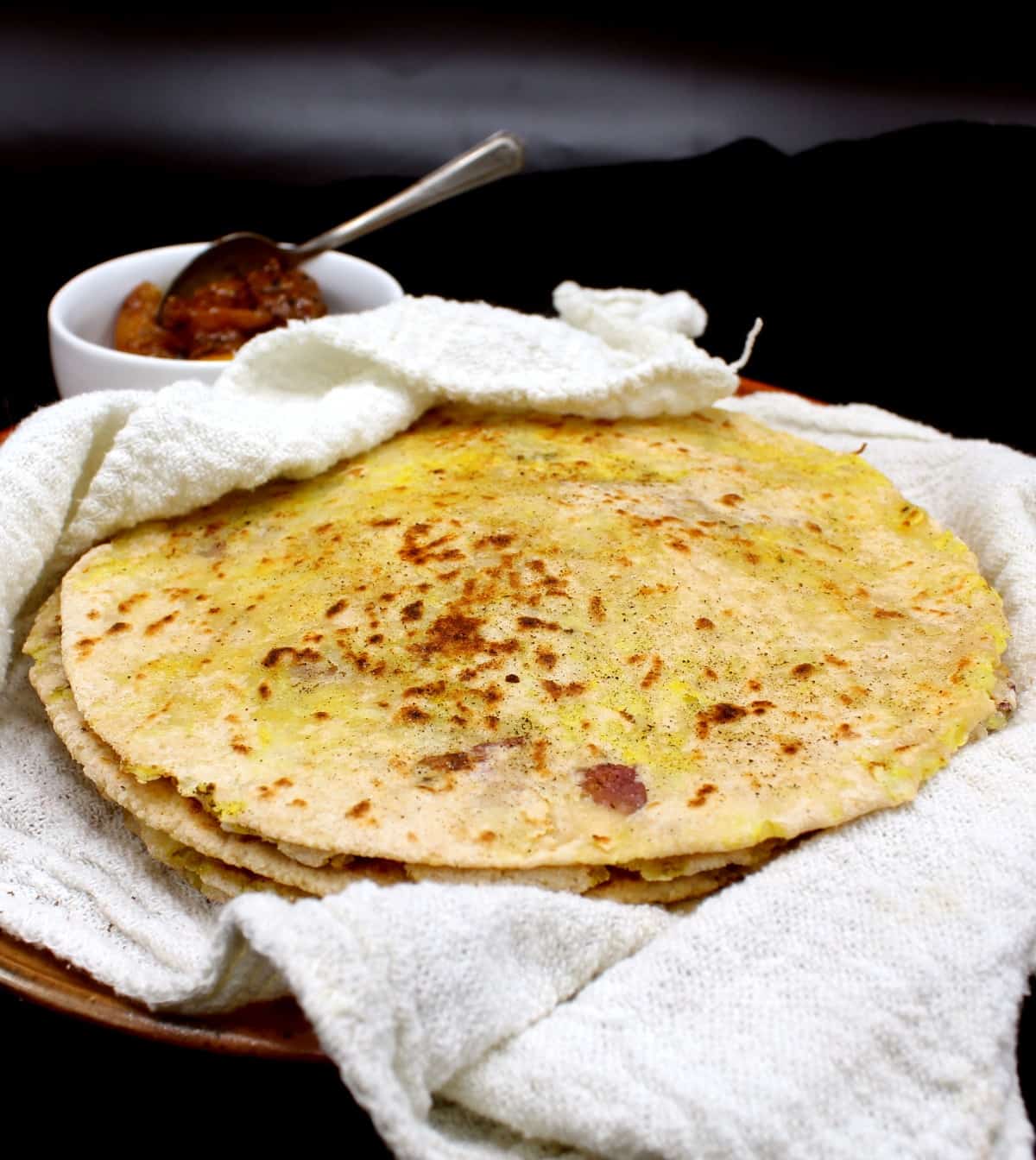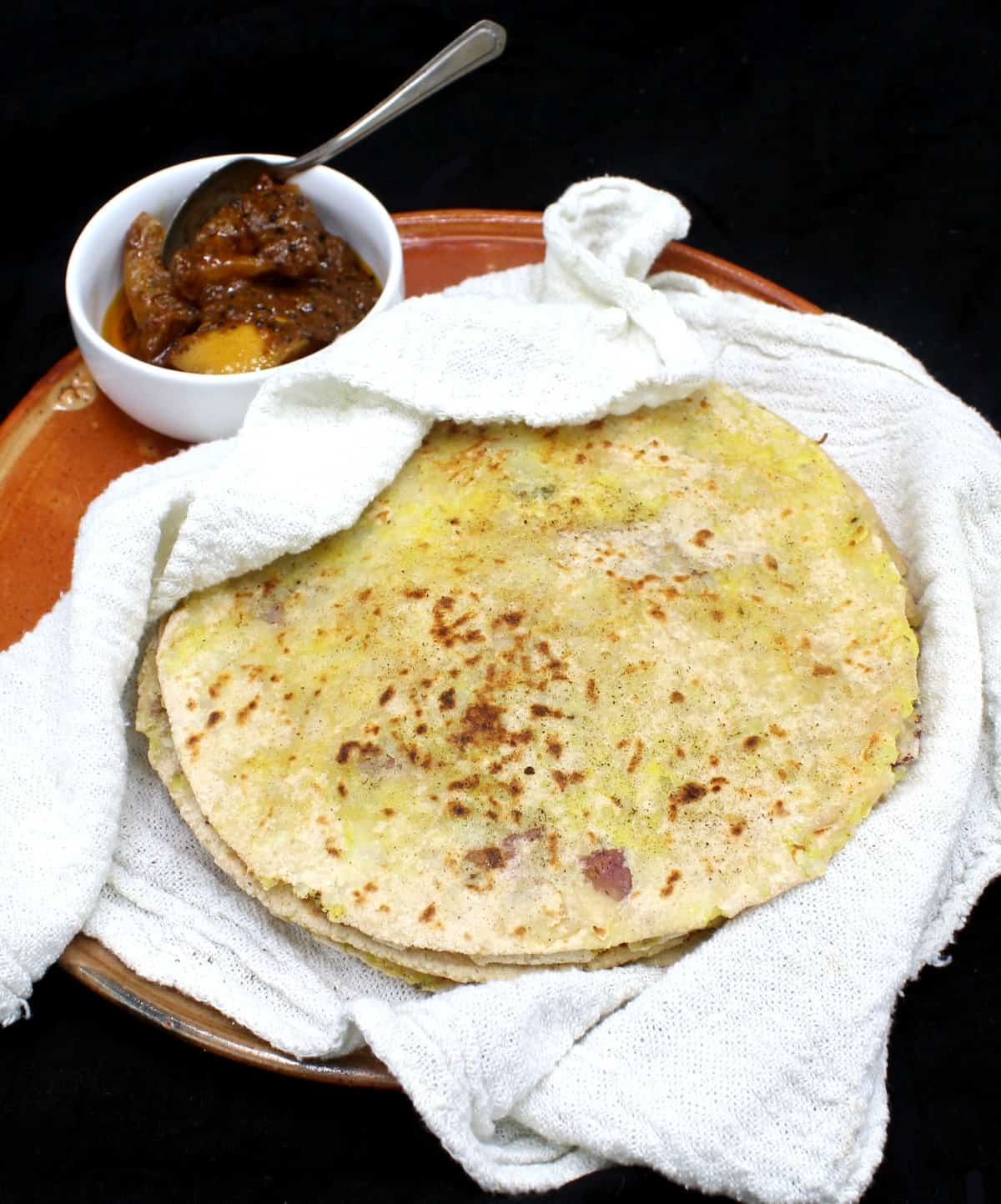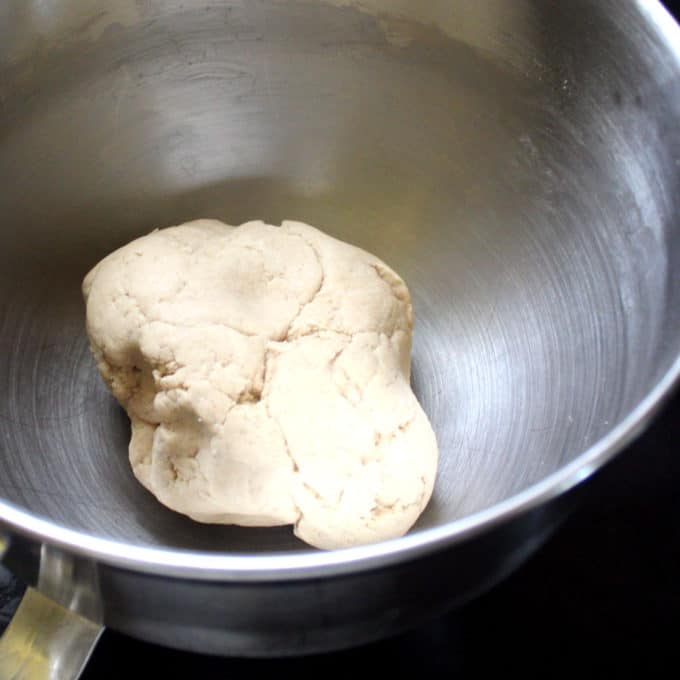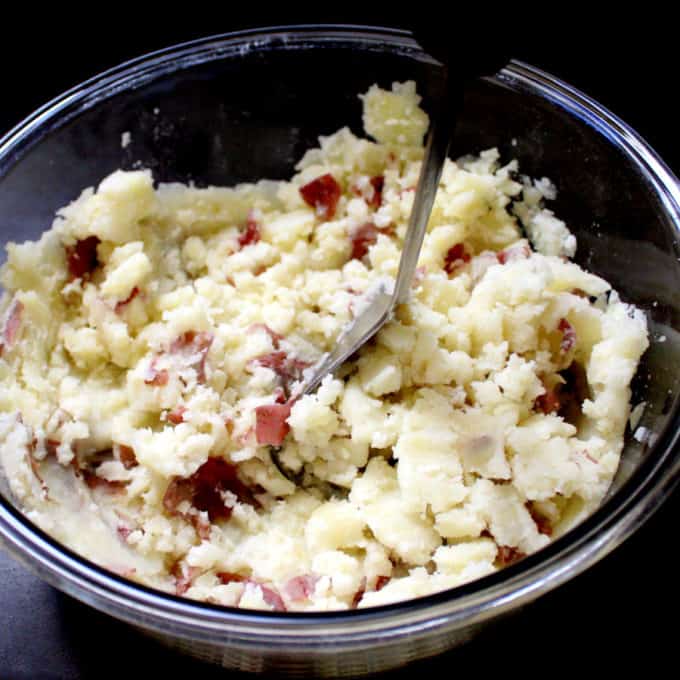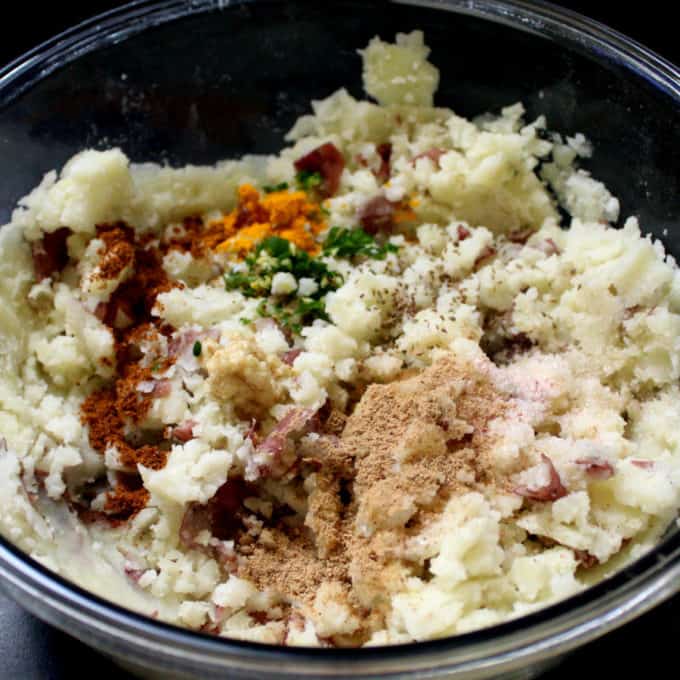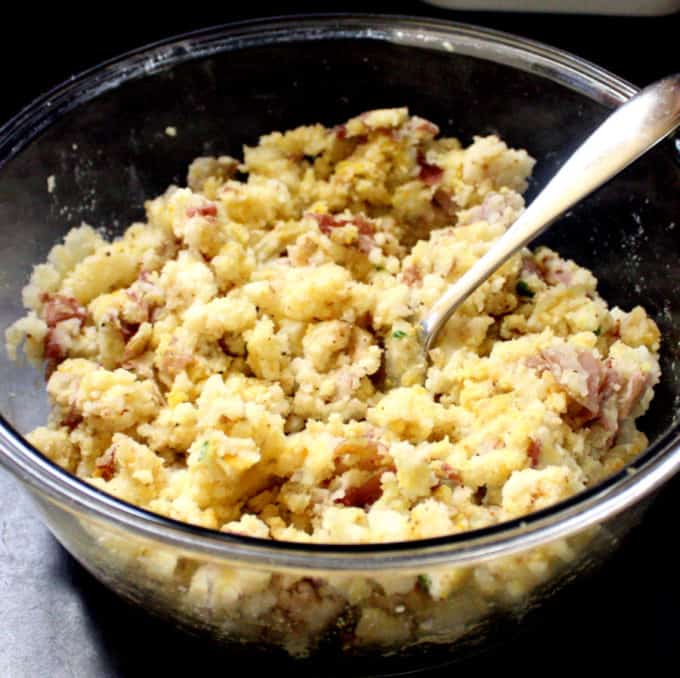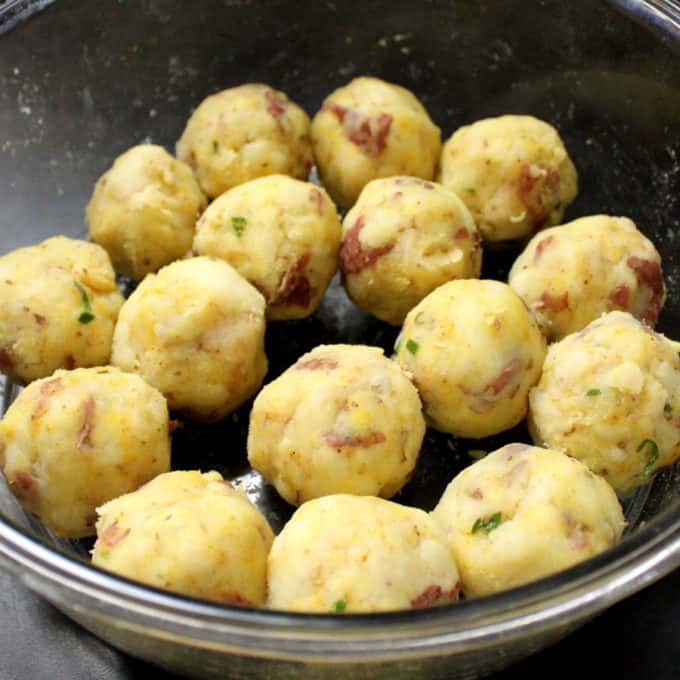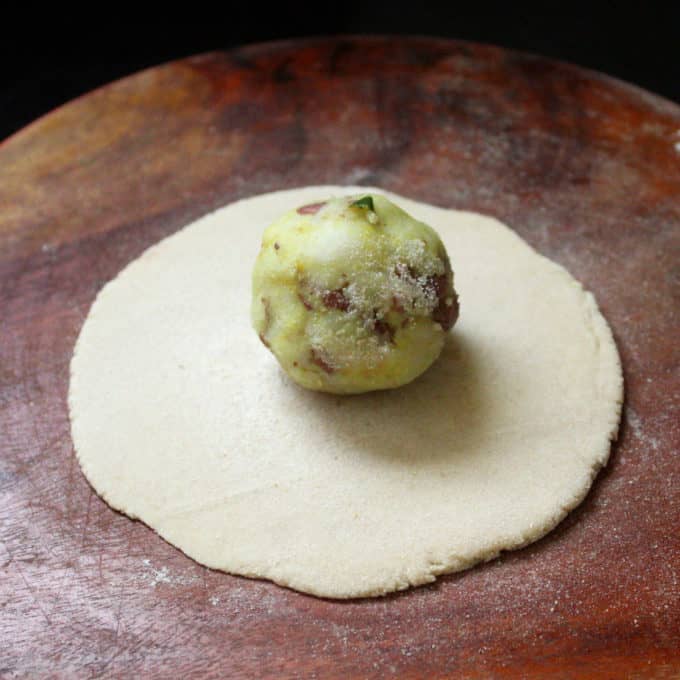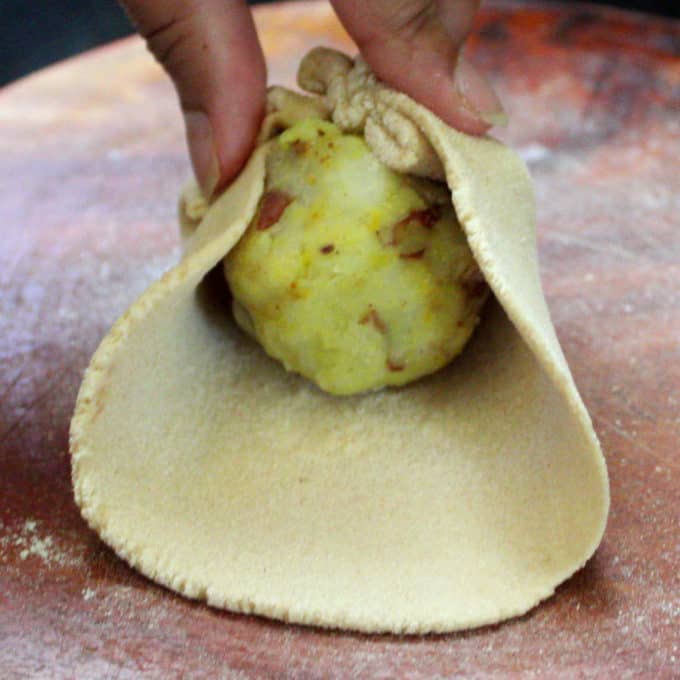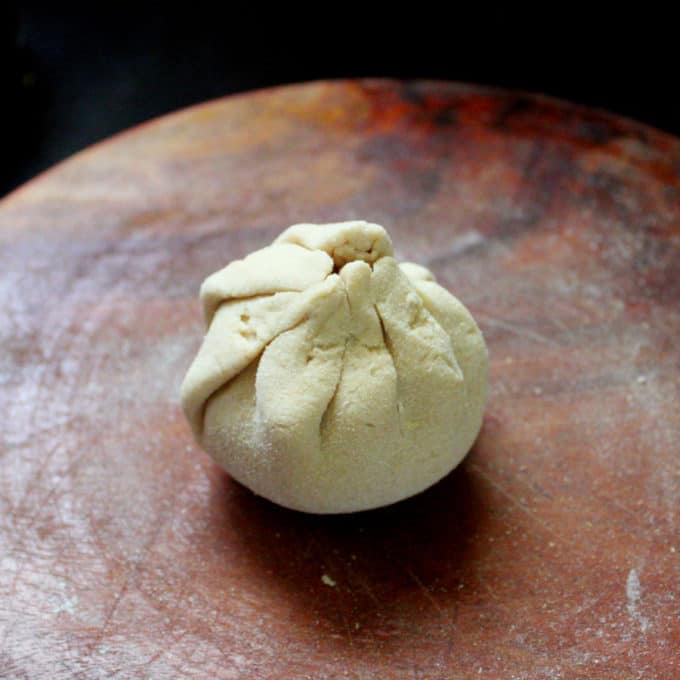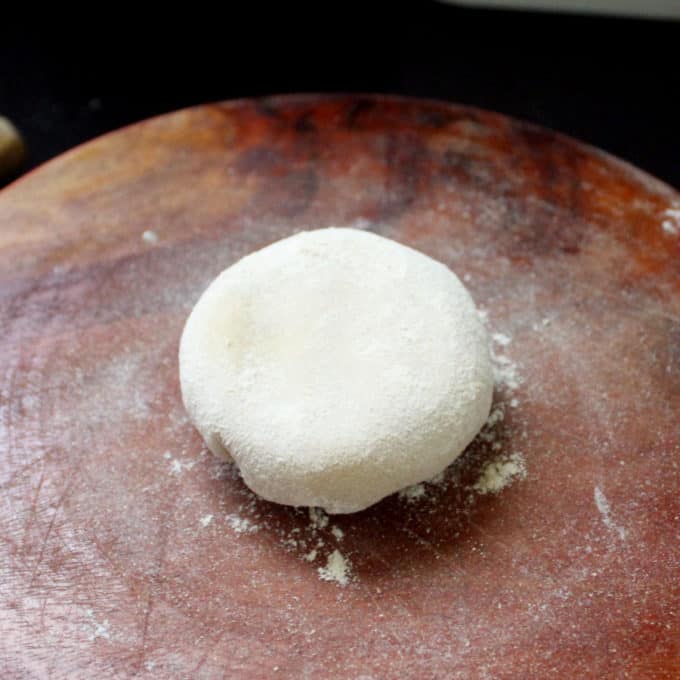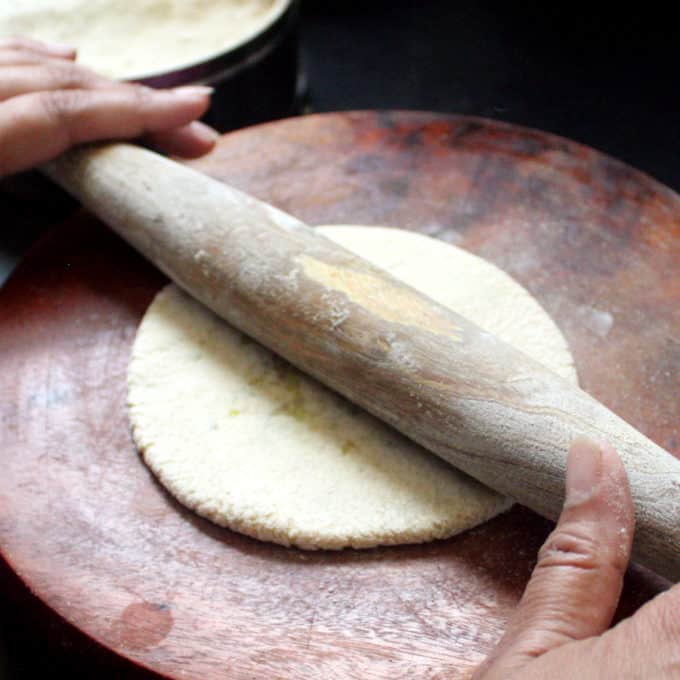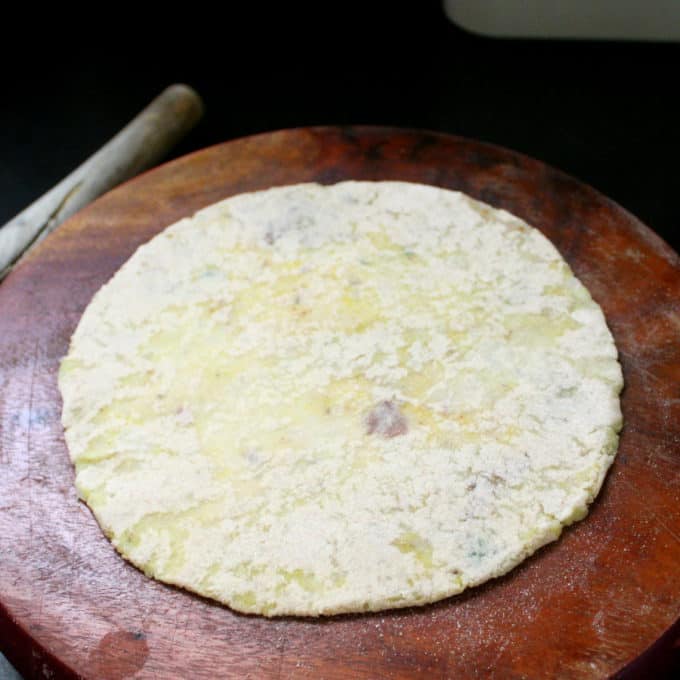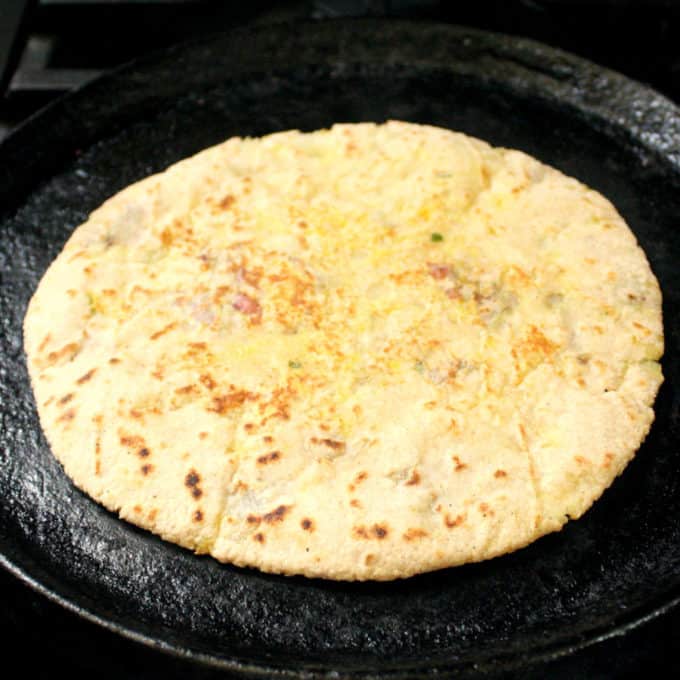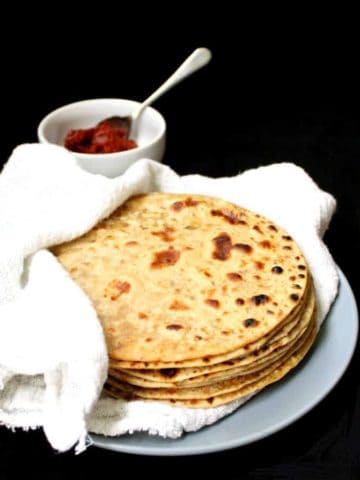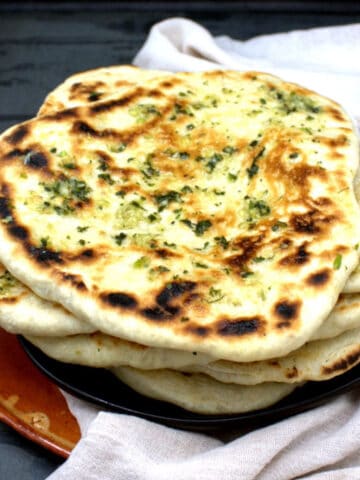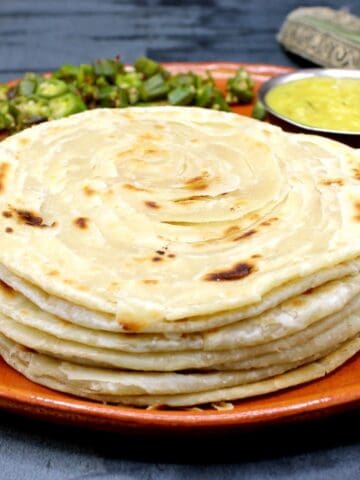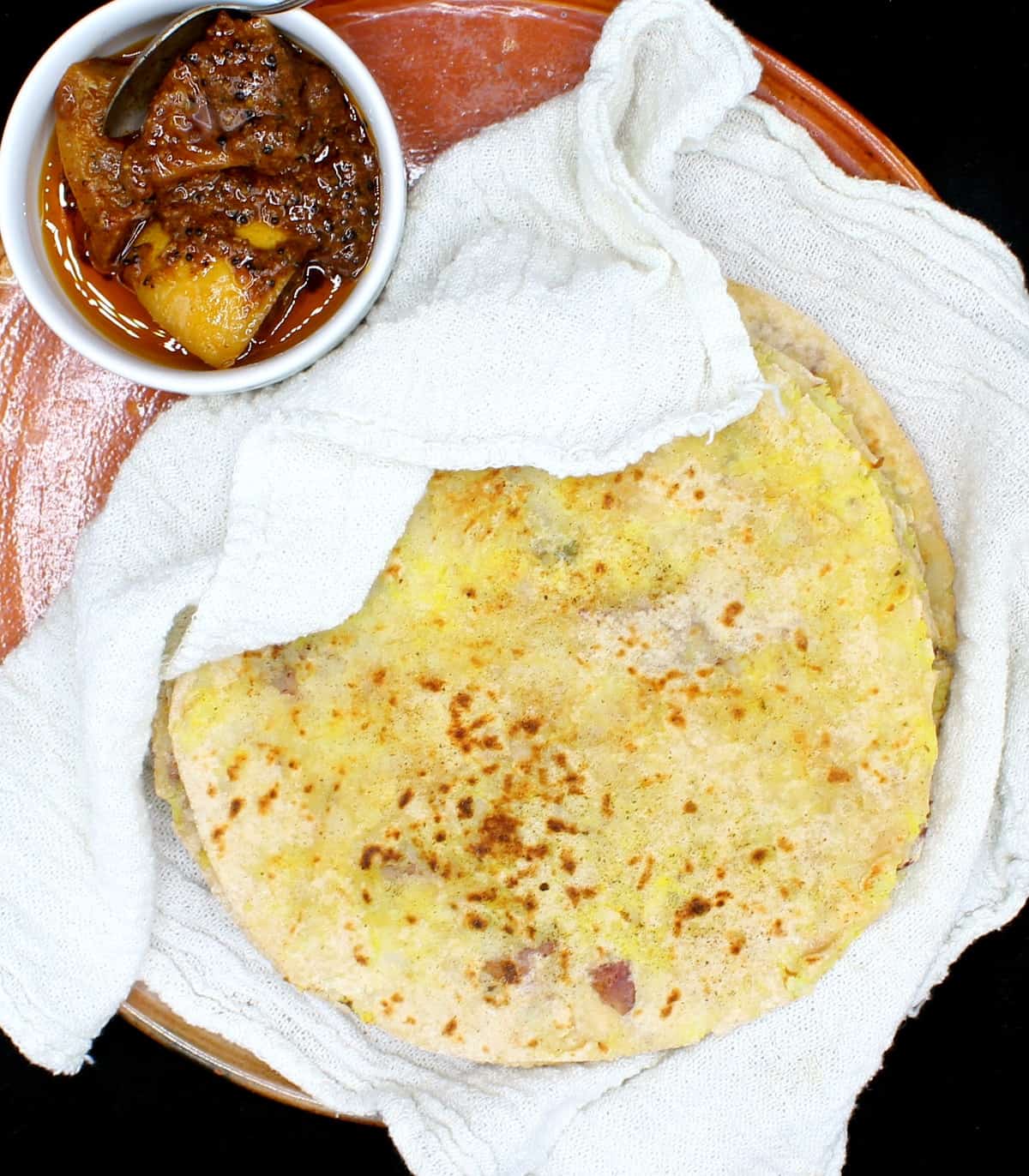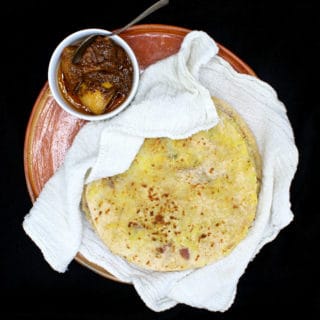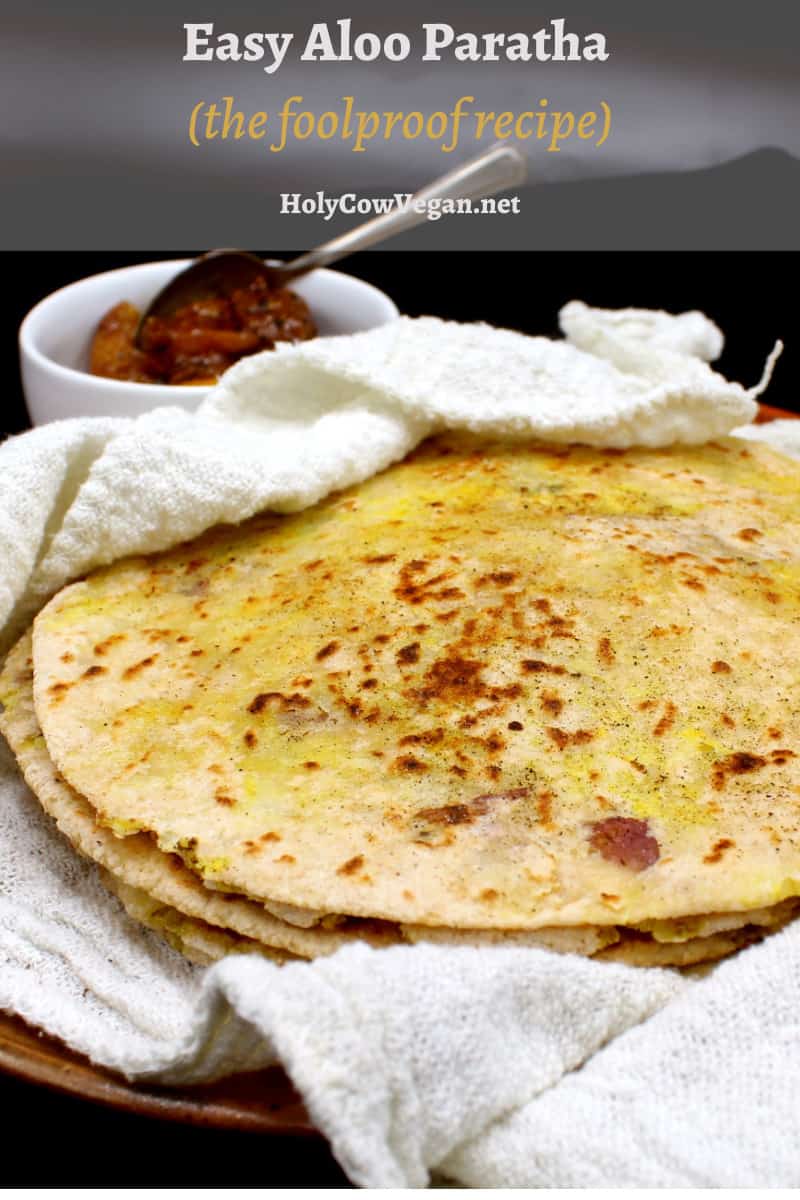This almost instant and easy Aloo Paratha is a huge hit in our home with Jay, who can eat four or five at a sitting and still ask for more. What makes it a hit with me is the fact that it takes just minutes to put together, because there’s no chopping or grating involved. All I need to do is boil a few potatoes (you can do this in the microwave or on the stovetop) and – once they’re done – mix in some powdered spices before rolling the parathas and roasting them on a griddle. Much like any other stuffed Indian flatbread, like mooli paratha, gobi paratha, methi paratha and pudina paratha, an aloo paratha is a healthy food, and it is almost certainly a kid pleaser. So you can eat it and feed it to your loved ones without a worry! Parathas belong to the north Indian state of Punjab (and pronounced “prantha” there) but they are a much-loved food almost anywhere in India – and for lovers of Indian food anywhere in the world. Aloo parathas are especially popular because what’s not to love about crispy dough encasing a delicious mixture of everyone’s favorite veggie? And they are by no means a difficult food to make, if you know how to roll a flatbread. What trips up some people when they make aloo parathas is that the stuffing tends to get all over the place, but I have a few tips to help you with that, so keep reading. And if you make these, do come back to tell me all about it!
Why you’ll love these aloo parathas
These parathas are crispy and flaky and savory with a delicious filling of potatoes. Everyone loves parathas - kids, adults, omnivores and vegans. Even the pickiest eaters won’t be able to decide whether to kiss the hands that made them or lick their plates. 😉 I make these aloo parathas very healthy, with whole wheat flour. Like most Indian flatbreads, they are unleavened. Which means you won’t have to spend time starting your dough, letting it rise, etc., although it’s always a good idea to let the dough rest for a few minutes after you knead it and before you roll the parathas. You can also use this recipe to use up your sourdough discard, if you have some.
Potatoes for aloo paratha
You can use any kind of potatoes, but you want to boil them to a point where they get tender without overcooking. Overcooked potatoes, especially russets, get waterlogged, and watery potatoes are not good in an alu paratha. For that reason, if you’re a new cook, I’d recommend using yukon gold or red potatoes. If you’re using organic potatoes, you don’t even need to peel them. You can boil the potatoes in the microwave, or on the stovetop, or in a pressure cooker or an Instant Pot. I like the microwave method because I find it the most convenient, but take your pick. I pierce the potatoes a few times with a knife, add a couple of tablespoons of water to the microwave-safe bowl, cover, and nuke for 8-10 minutes on high power. The potatoes should be tender enough that a knife inserted in the center goes cleanly through. You don’t want any big lumps of anything in the paratha because that will make it difficult to roll, so grate the boiled potatoes, or mash them so there are no lumps. Also use dry ingredients for the rest of the stuffing. For instance, in this easy and instant version, I don’t use green chilies or lemon juice, which a traditional north Indian cook would use. Instead I use red chili powder and chaat masala, which adds a tang and more flavor without the moisture from lemon juice. I also often sub the fresh garlic and ginger with powdered versions. The dry ingredients keep the potatoes firm, making it easier to roll them after they’re encased in the dough. I tend to overstuff my parathas. If you like, you can cut down on the amount of potato stuffing in each paratha, which will also make it easier to roll them.
Make the aloo paratha dough
If you’re used to making Indian flatbreads like roti or chapati, the process for making a paratha dough is no different. You’ll place the flour, carom seeds and salt in a bowl and drizzle in water slowly as you knead. You can do this in a stand mixer or food processor, but doing it by hand will give you a better idea of how much water you need. Your dough, in the end, should be pliable and smooth, but also fairly stiff. A soft dough will tear when rolling. I usually make my alu parathas with whole wheat flour, but if you want to make them flakier, you can replace ¾ths to 1 cup of the whole wheat flour with unbleached all purpose flour. If you’re going to use sourdough discard in your paratha, replace about ¼th of a cup of the flour with ½ a cup of sourdough starter, then proceed. Remember, you’ll need less water. Sourdough makes the parathas softer yet crisper, and healthier, so I highly recommend this. It’s good practice to let the dough rest about 30 minutes after kneading, which makes it easier to handle. But if pressed for time, you can make them rightaway.
Assemble and roll aloo paratha
To make the paratha, divide the dough and the stuffing into 16 equal portions, and roll each into a smooth ball. Take a ball of dough, flour it lightly, and roll it into an even round about four inches in diameter. Place the ball of stuffing in the center, then pull in the edges, gathering them on top of the dough, as if you were making a dumpling. Press to seal the edges and roll the dough back into a smooth ball between your palms. Flour the ball of dough and roll. Don’t put your weight on the rolling pin, as I sometimes still tend to do. Just roll lightly, letting the weight of the rolling pin do most of the work. This will also ensure that the filling does not squeeze out. It’s okay to dust with more flour if things start to stick. After every couple of rolls, turn the disc slightly and continue rolling. Repeat. This will ensure you get a neat, round paratha. Finally, if the stuffing does squeeze out, don’t panic. A little bit of the potato baked directly on the griddle actually makes the paratha even tastier. Just pat it down, dust with flour, and continue to roll gently.
Make ahead
You can make the dough and the filling ahead and assemble them before you cook. If you make them a day ahead, refrigerate them, then let the dough reach room temperature before you roll the parathas. Check to get new recipe updates by email.
Serve
Serve the aloo parathas hot with chutney or cucumber raita or lime pickle. The parathas can also be used to scoop up a sabzi like Tofu Palak Paneer or Vegan Dal Makhani.
More Indian flatbread recipes
Recipe card
